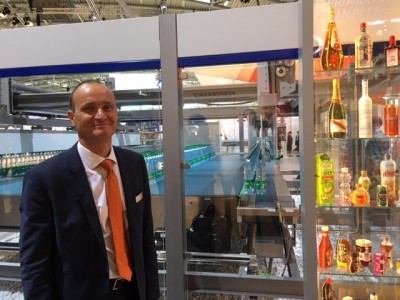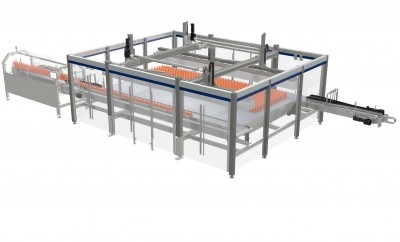The factory of the future: ‘From mass production to mass customization’
Digital connectivity, smart technology and robotics will all have a role to play in creating these factories, says Gebo Cermex, a specialist in packaging line solutions.
The company was setting out its vision of the ‘Factory of the future’ at Brau Beviale in Nuremberg, Germany, this month.
The biggest challenge for tomorrow’s factory is to produce an increasing number of SKUs according to customers’ exacting demands: yet also be as cost efficient as today’s volume-based models.
Agility is key
Making factories more connected, agile and flexible is crucial for the factories of the future, says Gebo Cermex.
The concept of ‘Industry 4.0’ sees the trend for automation and data exchange spread across various manufacturing technologies. ‘Agility 4.0’ is Gebo Cermex’s approach to creating facilities for the era of the smart factory, taking the idea of ‘Industry 4.0’ from concept to reality.
“The new technology we see emerging more and more today – through the use of smart system, robotics, big data – will allow the beverage industry to adapt its traditional production model (focused on volume) towards the more agile production model,” Ludovic Tanchou, vice president of innovation and marketing at Gebo Cermex, told BeverageDaily.
“This new model will allow production of more SKUs, but at the same performance level and cost that what we could achieve with a model based on volume.
“So it’s mass production vs mass customization”.
An era of personalization
Consumers now know exactly what they want and when they want it.
“As consumers is we expect to get what we want, just for our needs, and not more. This is driving our consumption behaviour and it will go back to the production model – we will have to go back and produce smaller batches that will be exactly what the consumer wants.”
For factories, harnessing the power of today’s technology will be the way to achieve this, says Tanchou.
Some of the technology is already being used in other industries, and the beverage industry must work out how to use it in its own situation. Other technologies are already being used by the drink sector, but will play an even more important role in the future.
Crucially, beverage manufacturers will need to work on integrating the technology across operations so that it is used to maximum effect.
But for Tanchou, what is particularly significant is that none of this technology is very far away. Robots, data management, remote assistance – the technology exists, but its role and importance will grow in the future.
“It’s not something for the future, it’s something for today. It’s already there. We have two options: we sit and we wait, or we jump and we enjoy this transition and benefit from the evolution as soon as possible.”
Five pillars for Agility 4.0
Virtual factory: for example, envisioning how planned production lines will operate
Smart factory systems: the use of automation and robotics, maximising efficiency.
Connected factory: communicates information across the factory, detecting and alerting managers to incidents in the production schedule
Eco-friendly: smart energy consumption will help factories become more efficient
Extended factory: switching from mass production to smaller sites
The five pillars: Click here for more details on how these technologies can be used.








